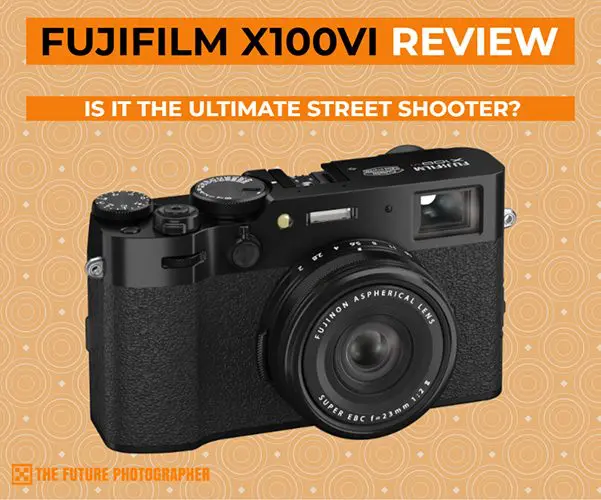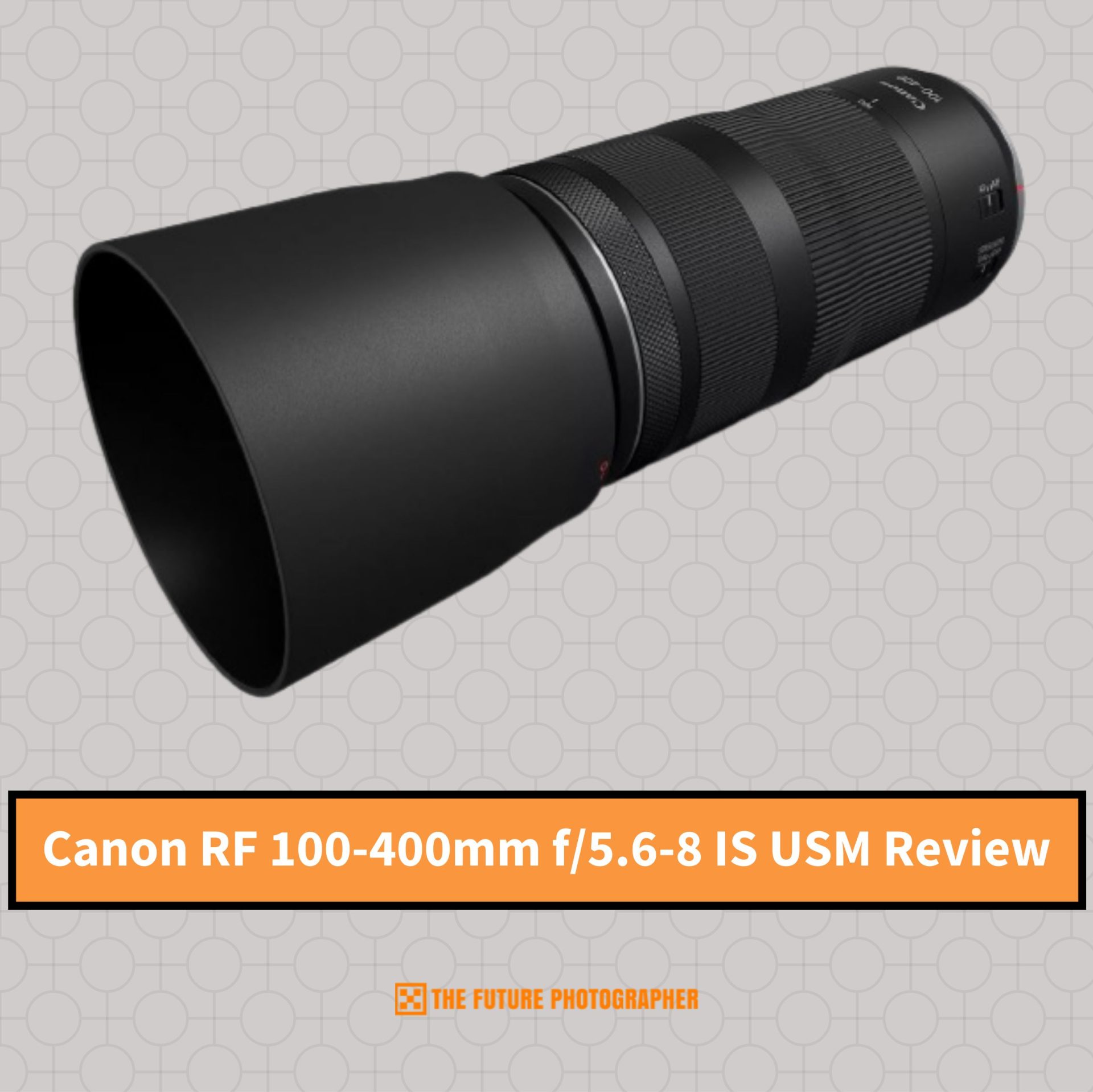
So, you’re thinking about getting the Fujifilm X100VI? You’ve probably seen the hype online, maybe watched a few YouTube reviews, and you’re wondering if this camera lives up to the buzz. This Fujifilm X100VI review is going to cover that for you.
It is understandable that this fixed-lens camera seems a bit, well, limiting. Especially because mirrorless cameras give the flexibility of interchangeable lenses. This review will delve into whether that limitation is a drawback or a strength.
Table Of Contents:
- What Makes the Fujifilm X100VI Special?
- Fujifilm X100VI review: Design and Handling
- Autofocus and Performance
- Video Capabilities: Better Than Expected
- Who is the Fujifilm X100VI For?
- Conclusion
What Makes the Fujifilm X100VI Special?
The X100VI isn’t trying to be everything to everyone. It’s a fixed-lens camera, and that’s very on purpose.
This is about returning to the roots of photography. This approach can get you to become more present, more mindful, and connect with your scene instead of fiddling with settings.
The Sensor and Image Stabilization
The X100VI moved to the 40MP BSI CMOS sensor used in the X-H2 and X-T5. This gives high levels of detail capture. In-body image stabilization (IBIS) is a first for the X100 series.
Fujifilm states the IBIS is rated at up to 6 EV of correction. But this drops to 5.5 EV when using the optical viewfinder.
The Lens: Sharp Enough for Most
The X100VI uses the same lens as the previous model, a 23mm f/2.0 lens (35mm equivalent). To weatherseal the camera, add the filter ring adapter and a filter.
It isn’t the absolute sharpest lens out there, especially wide-open at close distances. The built-in lens appears to do well in front of a high-resolution sensor.
Film Simulations: More Than Just Filters
The X100VI includes the Reala ACE film simulation. The total comes to 14 simulated film stocks (20 with variations of mono modes) with Nostalgic Neg and Eterna Bleach Bypass added.
Fujifilm’s JPEG engine and its interesting “Film Simulation” color modes give incredible results. These simulations offer more than just basic filter effects, allowing for creative expression straight out of the camera.
Fujifilm X100VI review: Design and Handling
The X100VI looks almost identical to its predecessor. The dimensions make it still work with the current LC-X100V leather camera case and existing converter lenses.
The control layout is exactly like previous models. There are dedicated dials for the main shooting controls.
The Hybrid Viewfinder: A Defining Feature
The X100VI carries forward the hybrid optical/electronic viewfinder. The finder also features improvements incorporated in firmware 2.0 for the X100V.
The “Corrected AF Point” is another display showing how close you are able to get to the camera. There are trade-offs in convenience to get these different modes.
However, it lets you see the world through glass *and* preview your shot. This offers a blend of traditional and modern shooting experiences.
Battery and Connectivity
The camera uses the same NP-W126S battery as the previous few X100 models. You get around 450 shots with optical or 310 shots using the EVF, per charge.
You can charge in camera via USB-C. But Fujifilm no longer supplies a separate charger.
Autofocus and Performance
Autofocus is expanded and improved, but yet strangely one of the less developed aspects. It has modes to detect animals, birds, and vehicles.
The camera has human face and eye detection, which is a setting that is independent from other subject recognition modes.
Subject Detection vs. Eye Detection
Subject detection and eye detection are separate settings. So you’d use one mode to photograph people.
Then use the other mode if shooting an animal, for instance. Subject detection and eye detection do not work in optical viewfinder mode, limiting that particular feature.
Speed Limitations
Subject recognition is decent at detecting subjects. But the X100VI’s heavy lens won’t be able to maintain focus with targets that move.
Learning to prefocus can work. Ultimately, this means the camera might not perform like the X-H2S, for instance.
Video Capabilities: Better Than Expected
The X100 series cameras, including this one, have always provided video capability. The video offers essentially the same features as the X-T5.
It’s interesting that many movie settings are now only available when the camera is in movie drive mode. So the menu in video mode only shows those particular settings.
Video Specs and Features
Here’s a quick breakdown of the key video specs:
- 6.2K recording: Up to 30p, from a 1.23x cropped region.
- 4K HQ: Derived from the 6.2K footage.
- Sub-sampled 4K: Up to 30p from the full sensor width, or up to 60p with a 1.14x crop.
- 10-bit recording: Supported, like on the X-T5.
This level of video quality is surprisingly robust for a camera primarily known for its still photography. It gives you an expanded creative ability.
Video Crops and Rolling Shutter
| Mode | Crop & Rolling Shutter | Equivalent Focal Length |
|---|---|---|
| 6.2k | 1.23x crop / 24.9ms | ~45mm |
| 4K (HQ) | 1.23x crop / 24.9ms | ~45mm |
| 4K 60p | 1.14x crop / 13.5ms | ~42mm |
| 4k | Full Width / 15.3ms | ~37mm |
AF will most likely not be very fast. You will get smoother transitions when incorporating some digital correction and cropping.
Audio and Connectivity
The X100VI does have a mic input. You can monitor audio with the USB-C socket.
There are third-party accessories and USB-to-3.5mm adapters for convenience, although one isn’t supplied with this model. The inclusion of a mic input is a significant advantage for videographers looking to capture high-quality audio.
Who is the Fujifilm X100VI for?
This isn’t a camera that’s meant to be used by a tech-spec-minded photographer. You need to be interested and intentional with the look of your photography and the story that is being conveyed.
This camera caters to photographers that value the process of taking a photo and connecting a story to it. It can include candid street photography, carefully composed landscapes, and everyday moments captured with intention.
It Might Not Be For You If…
There’s a fixed lens. So that limits being able to swap lenses for those instances where the scene requires different glass.
Its size and autofocus performance don’t make this a speed machine. It has styling where other people on social are referencing things like “TikTok.”
Some also see this type of camera in general as what a “Hipster” uses. Keep those remarks in mind.
Conclusion
The Fujifilm X100VI might just remind you of the fun of photography. It’s great when you have a clear photographic idea and stick to it.
As a reviewer tasked with exploring every single detail of this camera, there were many items I ended up disregarding and not utilizing. This allowed me to focus just on shooting with this incredible camera.
This Fujifilm X100VI review only scratched the surface of what’s possible. The X100VI offers a unique blend of classic design, modern technology, and a focus on the essentials of photography, resulting in a shooting experience.
Check out our other articles for the latest Future Photographer content.






